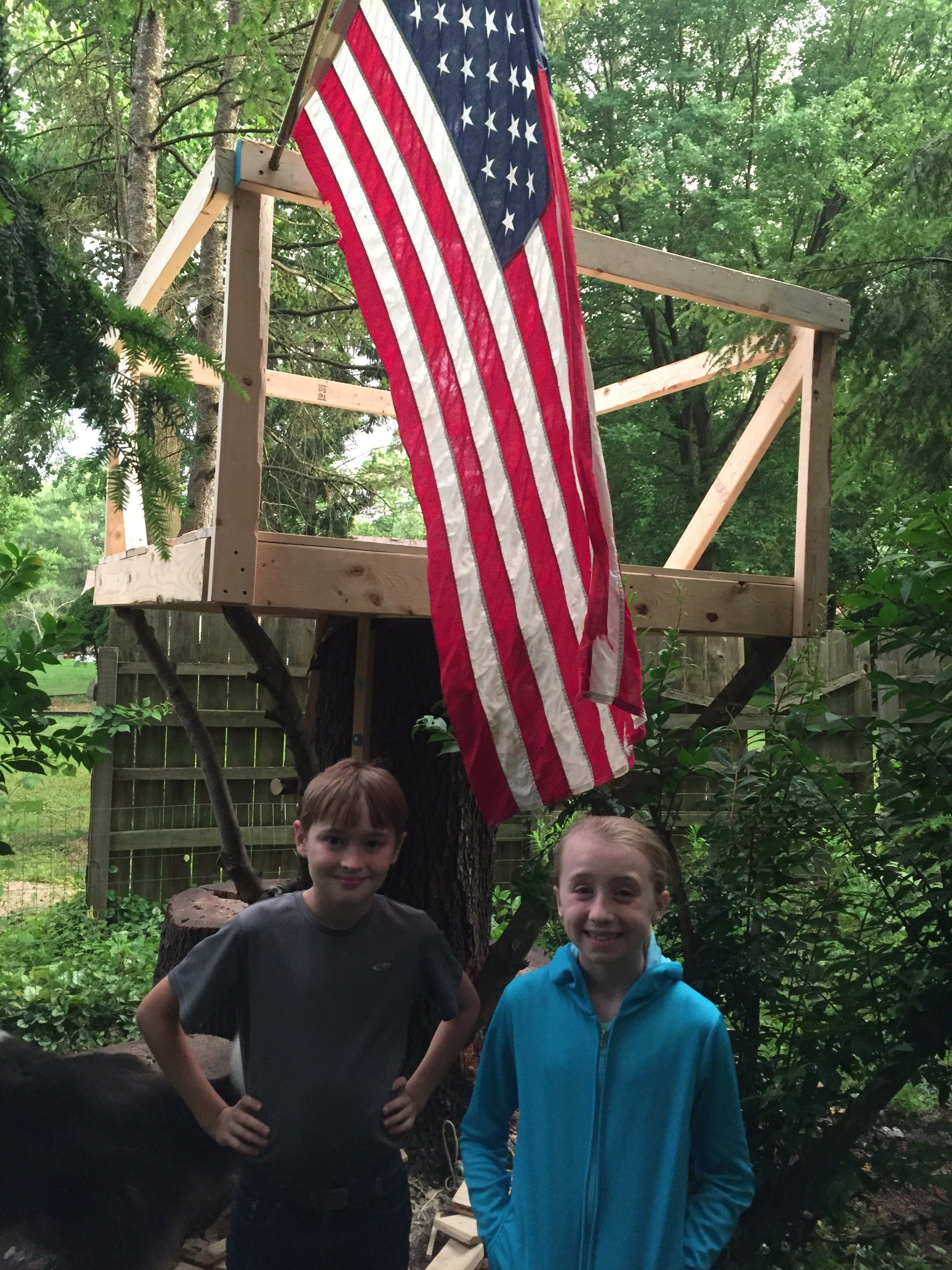Building a Treehouse and Character
The kids and I built a treehouse this summer.
When a large cherry tree had to come down in the backyard at the end of last summer, I asked the sawyers to leave six feet of the sizable stump standing. The stump sat there all fall and winter—I kept waiting for a suitable chunk of time, such as a long, empty weekend, to tackle the project.
After the winter passed, and then the spring, I realized that this was a project that was going to have to unfold in pieces—a little here and a little there. It was important for me to not just do this for the kids, but to do it with them, so I began by asking them to brainstorm design plans. Each of them drew out a sketch of things they’d like to include in a fort. We checked out eight books from the library on how to build a treehouse and began talking about how to make it work.
They were immediately engrossed in the project, and it was a lot of fun to share conversations about how to pull this off. A few key insights from the books helped me devise an approach.
Then, one afternoon, we went out back and started.
We created a level base on the stump for a platform, then we built a frame for the floor and placed it on the stump. We stretched struts to stabilize the structure, and thought about how to integrate a trap door.
I’m certain the work could have been done more efficiently by professionals, but we figured it out together. At each stage, we discovered what needed to take place, and then solved the problems with one another. After six weeks of putting in an hour here and 45 minutes there, we had a structure that somewhat resembled our original design.
The most fun part was installing the floor. Some of the work was too hard for the kids to contribute to meaningfully (such as chopping out notches in the trunk for steps), but I let them handle nailing the planks to the frame for the floor. Everyone had a hammer or screw gun and was on their hands and knees whacking away.
The work was hard—we put a lot of sweat into the project—but the labor invigorated the kids. They kept asking about when we’d get to the canopy, and how we’d figure out the railings. At one point, we stood back and relished what our efforts had produced, and they were able to recognize how satisfying it was to work hard on something and see it create something useful.
So, now they have a structure to enhance their play in the back yard, and a few life lessons learned as well.
Most of the ways we form our children are intellectual or emotional in nature: school and homework, music lessons, and behaving well with siblings and friends. Forming them with physical effort is also important because it forms habits and expectations around effortful labor. Sports get at this to some degree, but kids should be asked to sweat from hard work around the house, too.
We require our children to contribute significantly to yard work—raking leaves in the fall, shoveling snow in the winter, weeding in the spring and summer—and, as the old saying goes, it builds character. They are not always pleased to do this kind of work, but they also know by now that they won’t get out of it, so they might as well roll up their sleeves and get through it.
The product of our labor is an extension of ourselves because it represents an investment of our energy and ingenuity—this is what gives labor its dignity. If our kids understand this, they’ll have a key that will open many doors.
All of this makes the treehouse an especially gratifying project—not only was the process a fruitful experience of teamwork and problem solving, but the evidence of our work will last for years. We all take pride in what we created—together.






